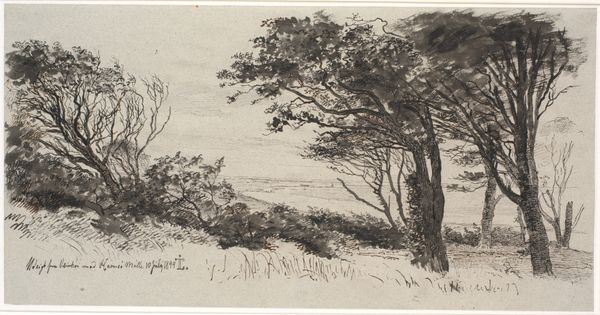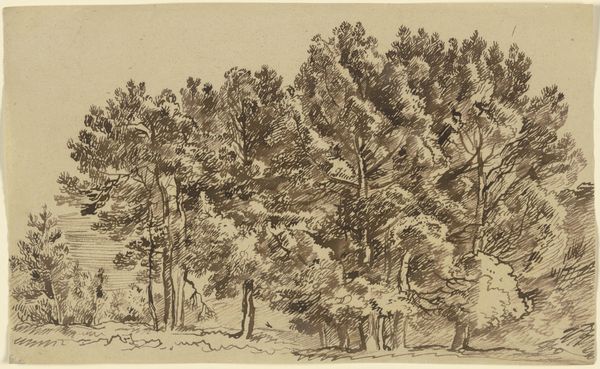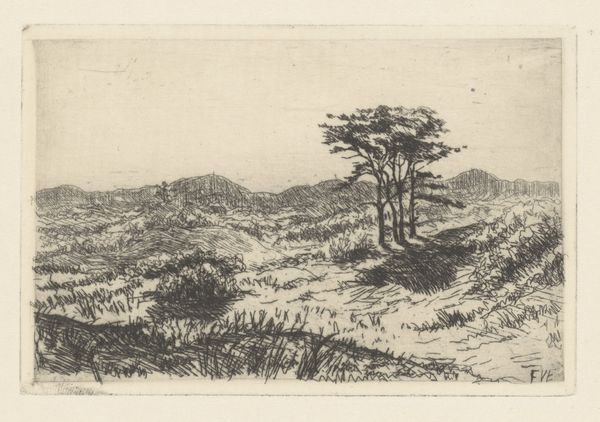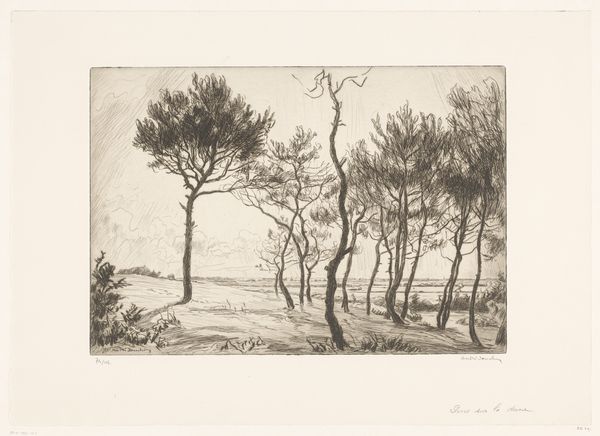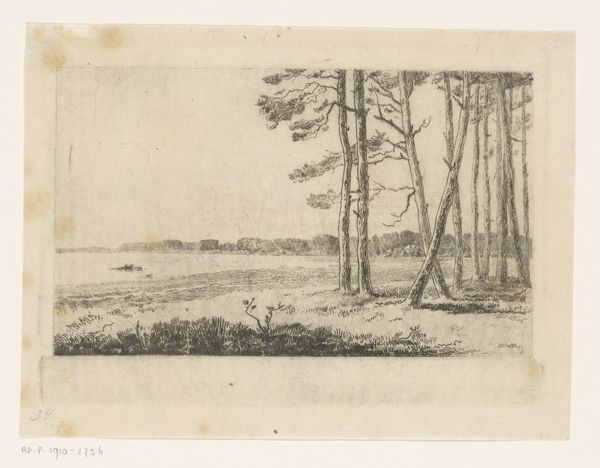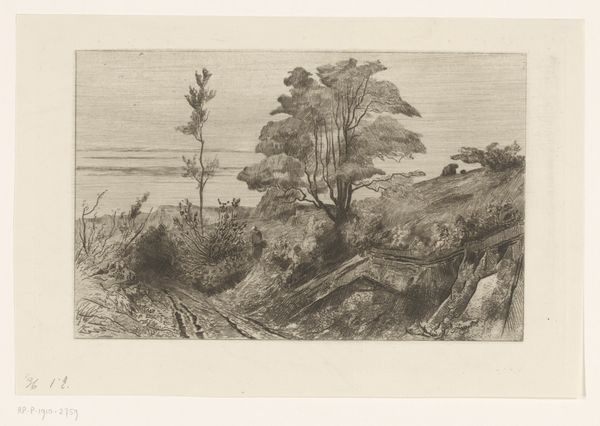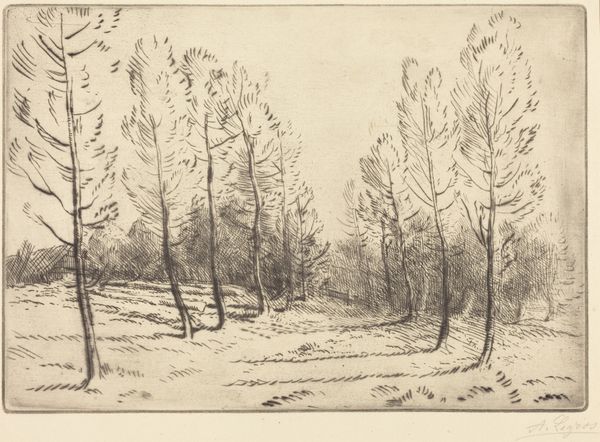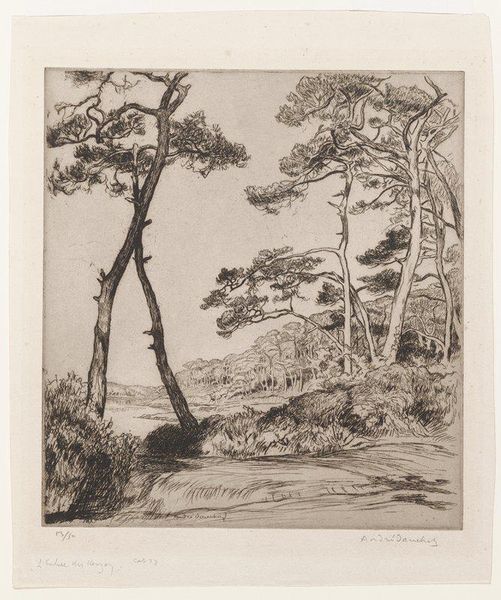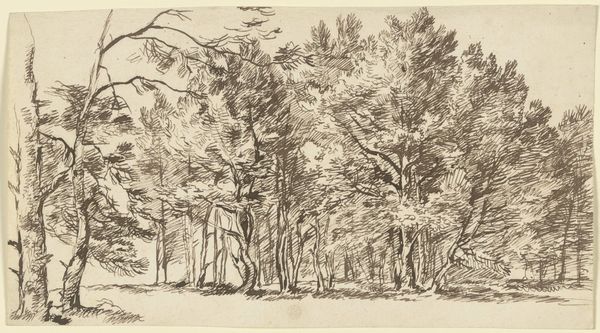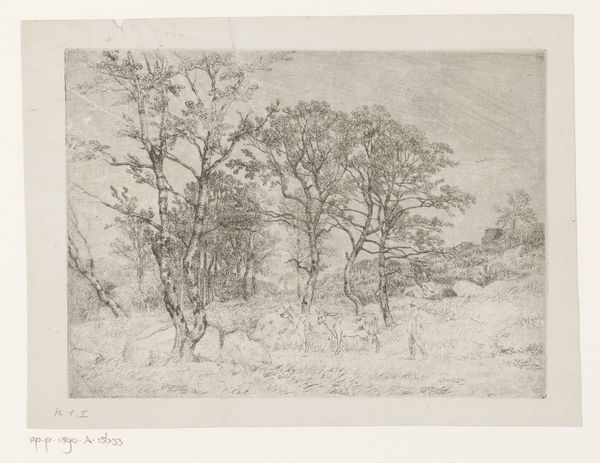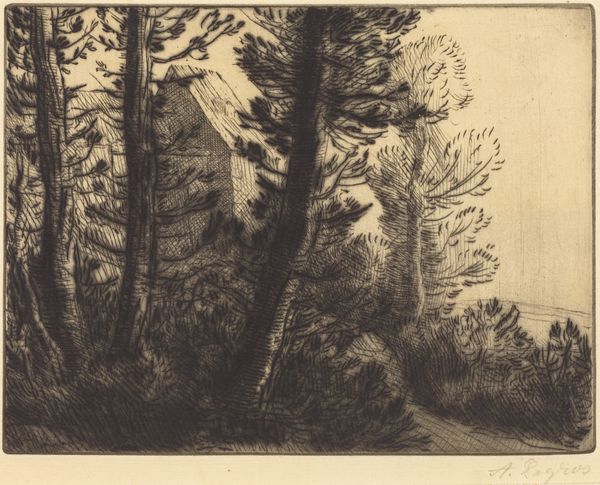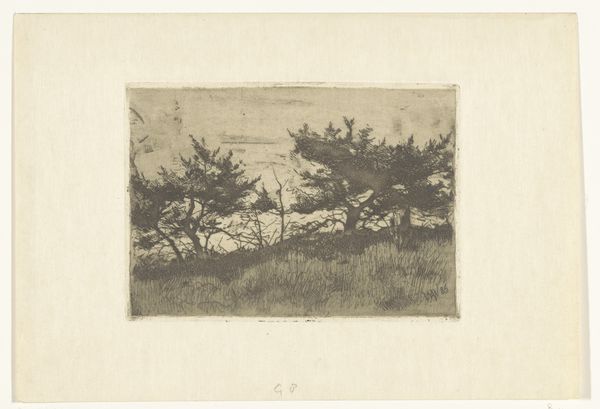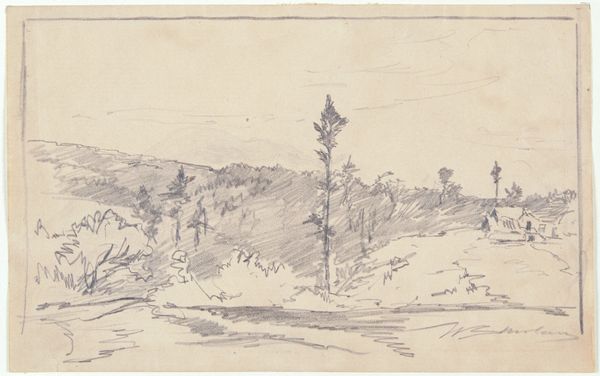
drawing, print, etching, paper
#
drawing
# print
#
impressionism
#
etching
#
landscape
#
paper
Dimensions: height 237 mm, width 316 mm
Copyright: Rijks Museum: Open Domain
Editor: This is "Glooiend landschap bij Wolfheze," a landscape etching made between 1880 and 1884 by Carel Nicolaas Storm van 's-Gravesande. It's currently held at the Rijksmuseum. I'm struck by the way the lines create such a detailed image from such a sparse palette of shades, creating a hazy, almost dreamlike feel. How do you read the piece? Curator: Considering its materiality, this etching is more than just a picturesque landscape. I am interested in the means of its production. What kind of labor went into creating this plate? The act of etching, using acid to bite into the metal, was not simply about artistic vision. How do those productive steps and means resonate with the depicted rural scene? Editor: That's a great point. I hadn’t really thought about the labor involved in creating the etching itself, instead of the scene portrayed. Curator: Look closer, think of it as craft. The industrial revolution was shifting how both art and labor were perceived. How does etching, as a repeatable medium, participate in this moment of artistic production? Is it a rejection of mass production? Or does it democratize the availability of art through printmaking? Editor: It is interesting to see it both as craft and perhaps making art more accessible with printed editions. Is the choice of landscape significant too, as a subject reflecting contemporary concerns? Curator: Precisely. The burgeoning industrialization forced a reckoning with the natural landscape and how the value of 'nature' was changing with it, so landscapes served a significant function for many people who felt they were being taken away from rurality. Editor: So, looking at it this way makes me think about how even seemingly simple landscapes like this one carry social weight regarding industrialization at that time! Thank you. Curator: Indeed. By shifting our gaze toward the production process and historical context, we can engage with "Glooiend landschap bij Wolfheze" and begin unpacking many other elements and questions about art and labor.
Comments
No comments
Be the first to comment and join the conversation on the ultimate creative platform.
